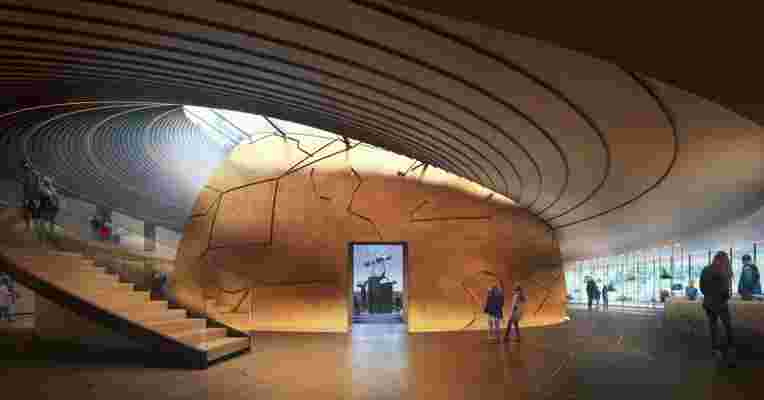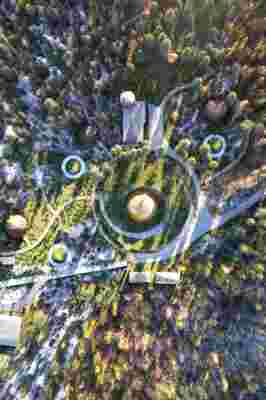Solobservatoriet, a Norwegian research hub and former satellite tracking station—used by the U.S. Air Force to monitor the Soviets during the Cold War—will soon receive a transformation masterminded by architecture firm Snøhetta. The facility, which is located in Harestua and is currently the largest solar observatory north of the Alps, was built by the University of Oslo for the 1954 solar eclipse and in the late 1950s it was expanded with the help of the U.S. Air Force to include the tracking station. The Tycho Brahe Institute purchased the Solobservatoriet in 2008, and now the institute, which is named after the 16th-century Danish astronomer, has commissioned a new planetarium and visitors center that will bring the wonders of the universe to life.
The design of the over 16,000-square-foot planetarium was inspired by astronomical principles and history, taking cues from everything from the first planetarium built by Archimedes in approximately 250 B.C to the latest advancements in the field. The structure is topped with a living roof planted with grasses, wild heather, and fruit bushes, making it appear as though it is rising from the surrounding meadow. The planted roof swirls around a golden cupola, which is engraved with constellations. Inside the striking dome is the centerpiece of the planetarium, a 100-seat theater, where visitors can see realistic projections of celestial bodies, including stars and planets.

A rendering of the inside of the building, which is slated to open in 2020.
Inside the structure, a café and exhibition area are on the same floor as the theater, and a lower level includes a bowl-shaped children’s play area. A ramp curves around the dome and leads from the main floor to a mezzanine exhibition area and the planted roof, where visitors can take in the night sky.
The planetarium is orbited by seven uniquely designed “interstellar” cabins. Each cabin is shaped like a small planet, and some appear to sit on the ground, while others seem to be embedded in the earth. The cabins range in size from 33 feet in diameter (which can accommodate up to 32 people) to nearly 20 feet in diameter (which is outfitted with two beds).

An aerial view shows the structure hidden in the woods, as it was once used as a base for the U.S. to spy on the Soviets during the Cold War.
The project is poised to turn the research facility into a major tourist attraction, with architecture as captivating as the exhibitions. The new Solobservatoriet is projected to open in 2020.
